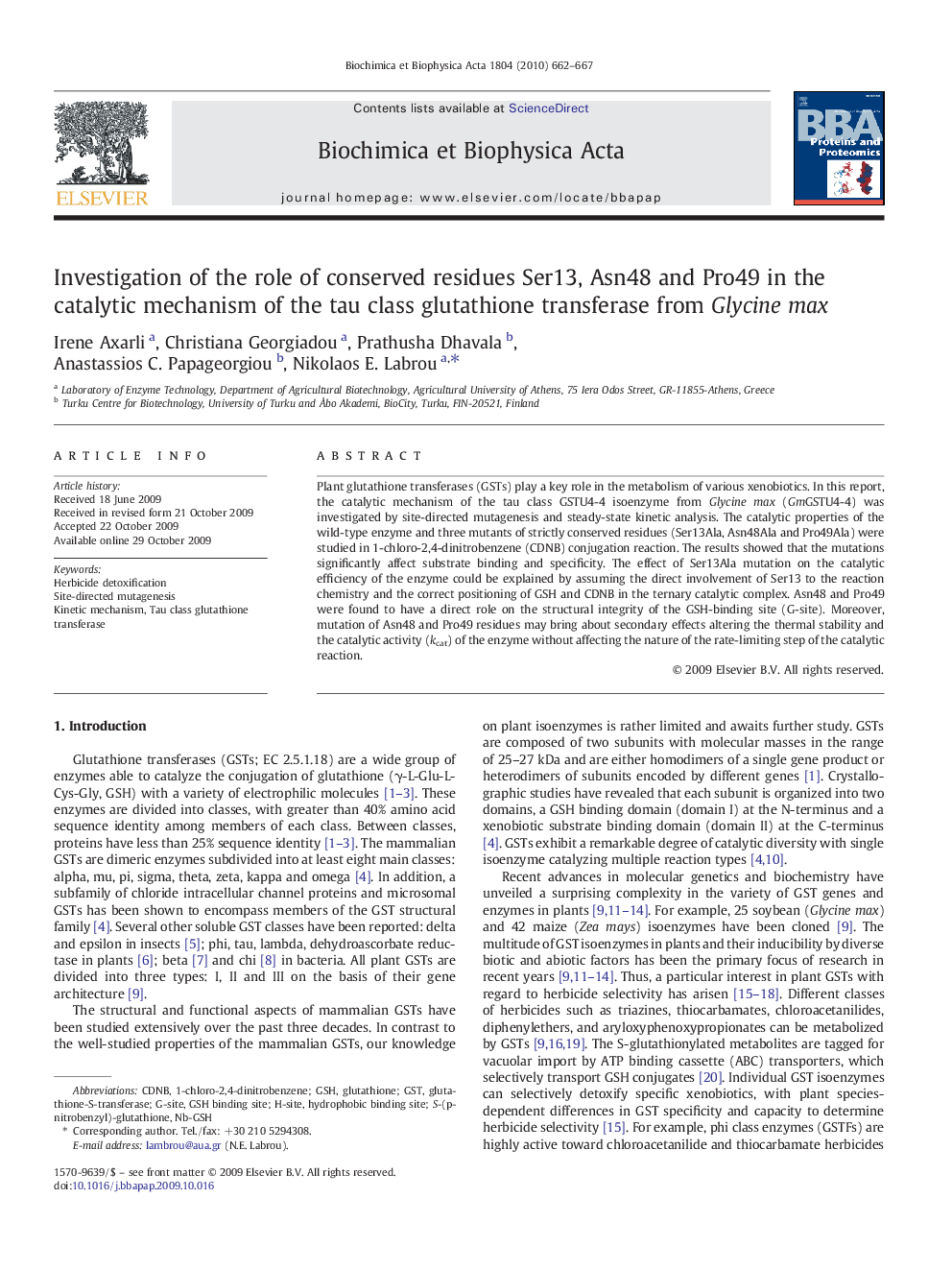| Article ID | Journal | Published Year | Pages | File Type |
|---|---|---|---|---|
| 1178885 | Biochimica et Biophysica Acta (BBA) - Proteins and Proteomics | 2010 | 6 Pages |
Plant glutathione transferases (GSTs) play a key role in the metabolism of various xenobiotics. In this report, the catalytic mechanism of the tau class GSTU4-4 isoenzyme from Glycine max (GmGSTU4-4) was investigated by site-directed mutagenesis and steady-state kinetic analysis. The catalytic properties of the wild-type enzyme and three mutants of strictly conserved residues (Ser13Ala, Asn48Ala and Pro49Ala) were studied in 1-chloro-2,4-dinitrobenzene (CDNB) conjugation reaction. The results showed that the mutations significantly affect substrate binding and specificity. The effect of Ser13Ala mutation on the catalytic efficiency of the enzyme could be explained by assuming the direct involvement of Ser13 to the reaction chemistry and the correct positioning of GSH and CDNB in the ternary catalytic complex. Asn48 and Pro49 were found to have a direct role on the structural integrity of the GSH-binding site (G-site). Moreover, mutation of Asn48 and Pro49 residues may bring about secondary effects altering the thermal stability and the catalytic activity (kcat) of the enzyme without affecting the nature of the rate-limiting step of the catalytic reaction.
